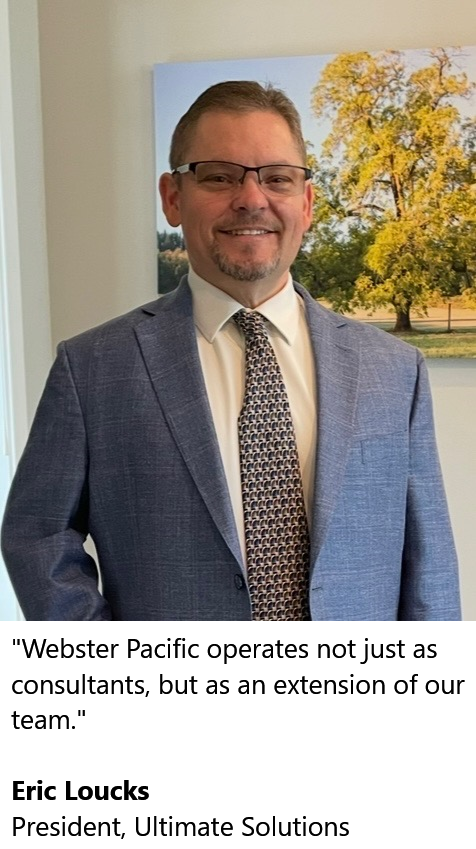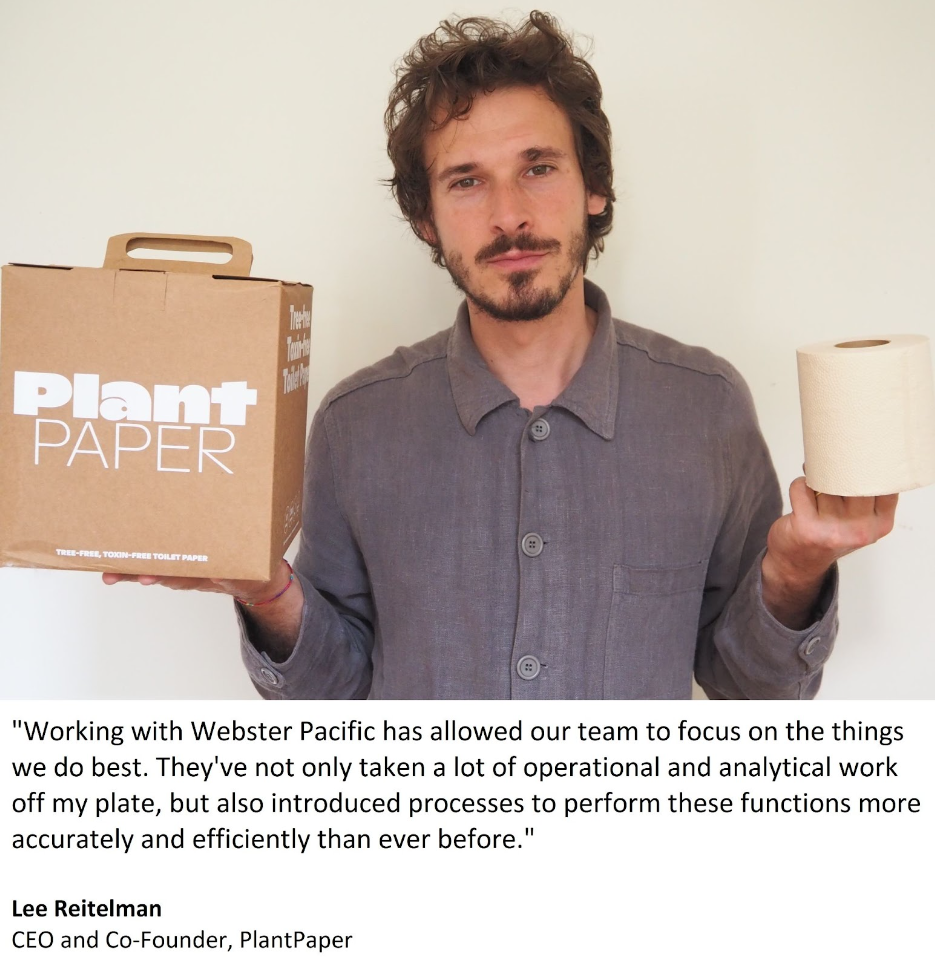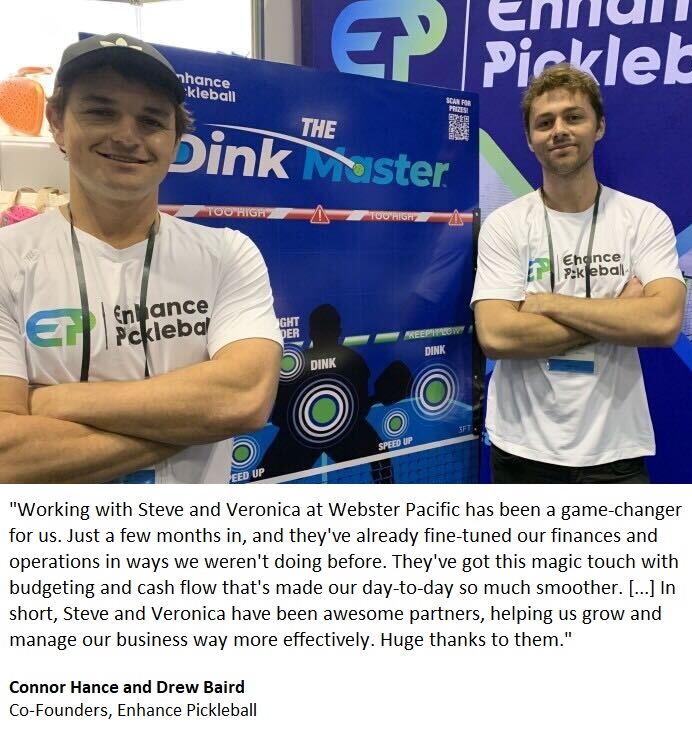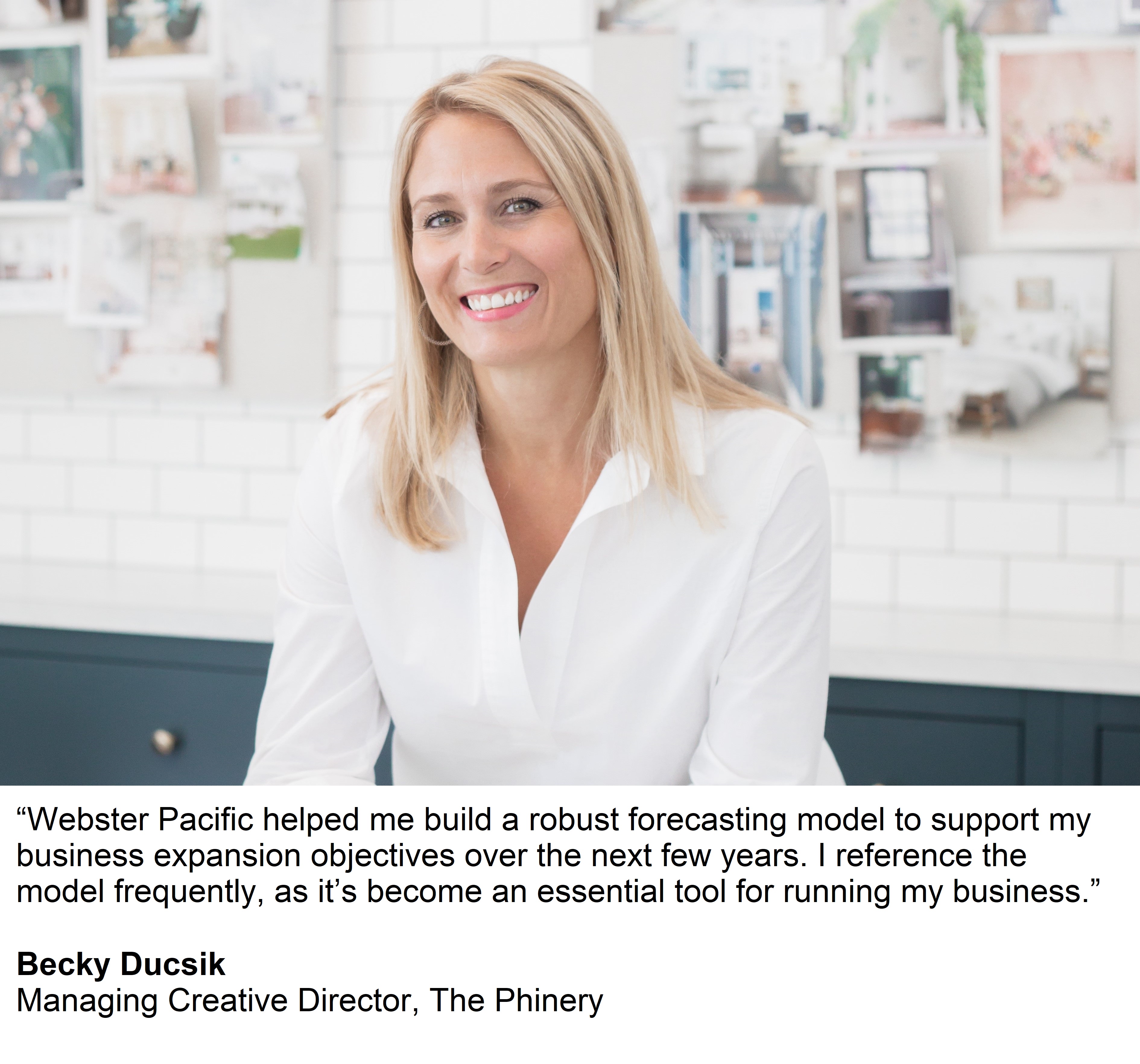I want to take a moment to recognize and express our deep appreciation for the outstanding partnership we’ve had with Webster Pacific. Their team has played a critical role in helping Ultimate Solutions identify, correct, and improve key financial and operational areas within our organization.
Since engaging with them as of July of 2024, Webster Pacific has been instrumental in guiding us through a thorough overhaul of our financial systems, ensuring accuracy, consistency, and actionable insight into our cost structures. They’ve supported us in aligning our purchasing processes and refining our pricing strategies—providing clarity where it was once difficult to track true performance.
In particular, they’ve helped us nail down our pricing strategy, clean up our bill of materials (BOMs), and gain a much clearer understanding of our product margins. These improvements have not only enhanced our financial visibility but have empowered our leadership team to make better, data-driven decisions across all departments.
The Webster Pacific team has been professional, detailed, and incredibly responsive throughout every phase of this process. They operate not just as consultants, but as an extension of our team—fully invested in our success.
We consider Webster Pacific a valuable strategic partner and would highly recommend them to any organization looking to gain financial clarity, optimize operations, and build a more scalable business model.







